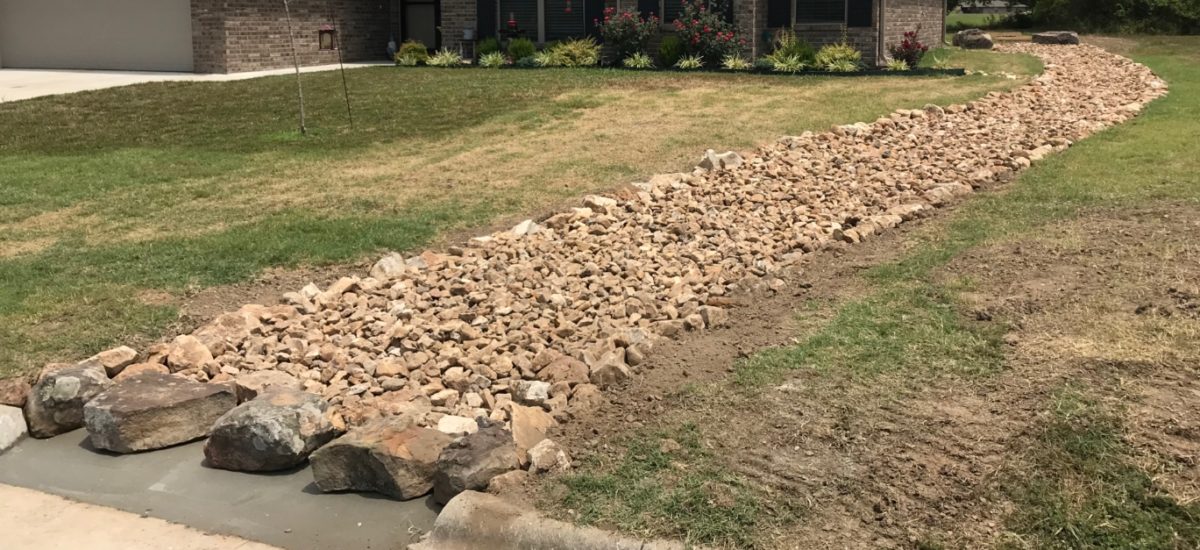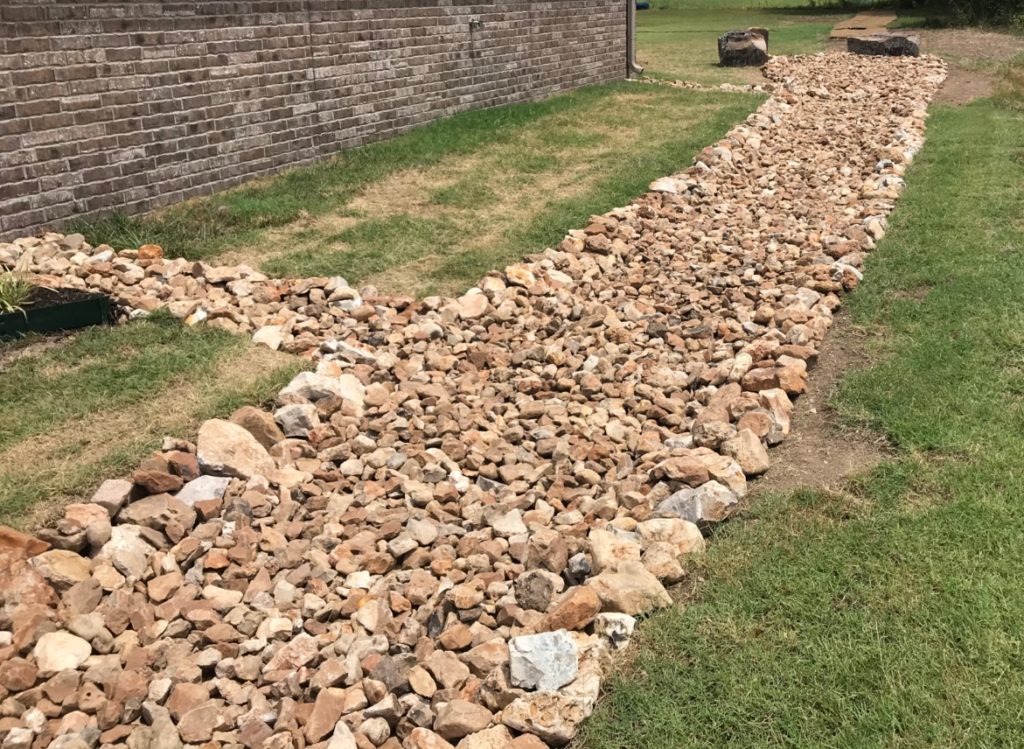The Function of A Dry Creek Bed as a Beautiful Lawn Feature

Posted on May 7, 2022 by Jeremiah Sooter
The phrase dry creek bed isn’t to be confused with a dry river bed. Although the two function similarly, the bed is responsible for channeling water during periods of winter and spring snow runoff or heavy rainfall; otherwise, it stays dry.
It can also serve as a beautiful lawn feature with purpose but requires little maintenance by design. Like with swales and berms, the eye-catching minimalistic xeriscape design follows the natural curvature of the terrain around your home or office building. That means giving the water a better path to head downhill.
Why Build A Dry Creek Bed?
Since there is no need to change the path water takes, the focus is simply on getting water moving along faster. That keeps the water from forming water pools or creating puddles.
By building a dry creek bed that mimics a large-scale dry river bed in the wild, you eliminate any disruption to the natural course water would take otherwise. A prime example of how a dry creek bed can help with drainage issues is during periods of heavy rainfall like we’ve experienced in the last few days here in the four-state region.
The Dry Creek Bed Build

Once building begins on a dry creek bed and the natural course water takes is identified, the real work can start whether your dry creek bed functions as drainage for your backyard, front yard, or even alongside your home or building; the build is essentially the same.
It is not difficult to create a dry creek bed design, although it can range in width and length, which is indicative of where the dry creek bed terminates along the edges and finally spills into an established drainage system. Perhaps the water flows into a much larger adjacent drainage system. It could even dump into an installed catch basin.
After identifying the preliminary direction and endpoint for the creek bed, all the terminating points get marked off using landscaping paint. Generally, a dry creek bed for drainage should be twice as wide as its depth.
So marking off the boundaries with a turf colorant ensures the installation of a dry creek bed that is one foot in-depth and is also two feet wide. That can provide an excellent visual display of the design, which also helps to know the general direction the water will flow as it passes through the creek bed.
Now the removal of existing vegetation and dirt can begin. After digging the bed, lay the landscape fabric. To hold down the landscape fabric along its edges, use the topsoil you cleared away from the dry creek bed.
Next, the landscape fabric is covered using a layer of pebbles, followed by a larger-sized river rock on top. The final step is to adorn the edges of the dry creek bed with as many of Missouri’s plethora of native trees, shrubs, or grasses that are drought-tolerant plants.
Landscape Finishings
When installing a dry creek bed, it’s a meticulous, labor-intensive job. Although far fewer materials are needed to build a dry creek bed, the labor involved can impact the cost.
So finding an affordable solution in the four-state region means reaching out to a drainage expert and landscape designer in the four-state area. These talented individuals can give you expert advice and determine the natural curvature of your property. Still, they can help guide you in an affordable direction for your budget.
The experts at Ground Up Services have a combined 15 years of experience in landscape design and drainage installation. Hence, no matter what drainage challenges you face, the team at Ground Up Services is ready to help you meet those drainage problems head-on. So be sure to contact the team at Ground Up Services today.